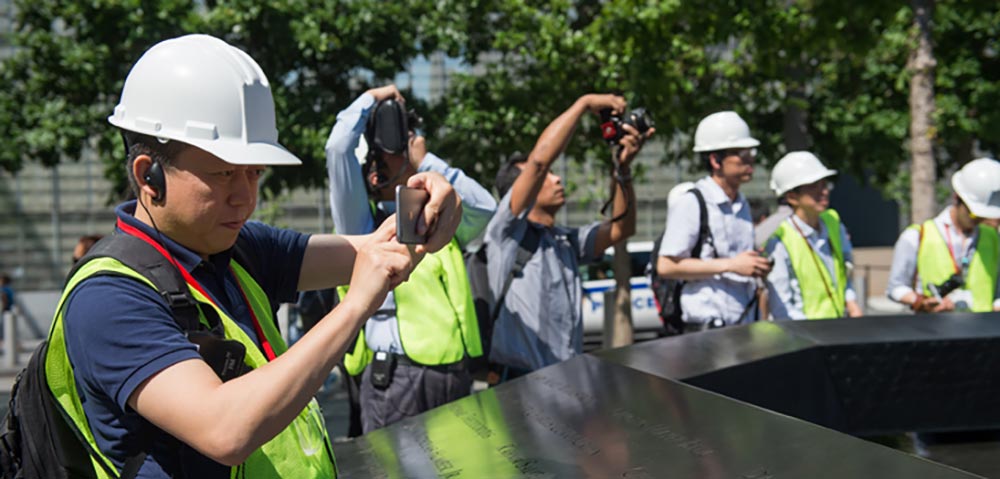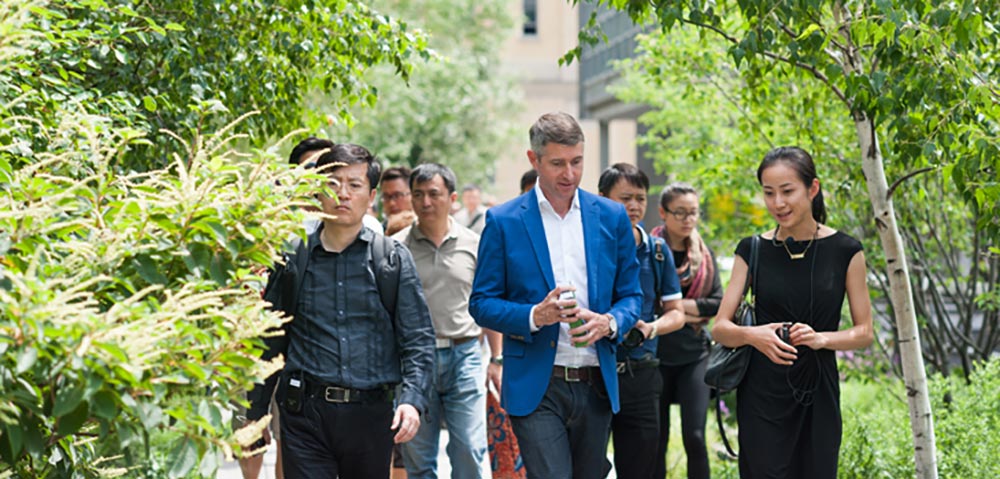AAP program for executives focuses on New York City
By Sherrie Negrea


Twenty-two architecture and urban design professionals from China took part in the College of Architecture, Art and Planning’s (AAP) first international executive education program recently, taking courses taught by architects in New York City and AAP faculty in Ithaca.
The intensive nine-day program launched June 21 and featured design seminars, site tours and visits to leading Manhattan architectural firms. Participants met key players who have planned and designed landmark architectural projects in the city, such as the National September 11 Museum & Memorial, the High Line and the Time Warner Center.
The program “brings architects from around the world to an important academic setting to think about the future of the city,” said Kent Kleinman, the Gale and Ira Drukier Dean of AAP. It was made possible by the opening in March of AAP NYC’s new studio space at 26 Broadway in lower Manhattan, providing a venue where architects from around the world could learn first-hand about the issues, policies and design practices that shape one of the world’s great cities.
Arthur Gensler, B.Arch. ’57, first proposed the idea at a meeting of the AAP Advisory Council to develop a design institute for executives, suggesting that AAP provide “a place where East meets West in the design cultures,” Kleinman said. A group of Advisory Council members rallied behind the idea, providing essential advice and support, he said.
In spring 2014, Kleinman traveled to China to present the idea to leaders of design institutes associated with major universities. A group of Chinese architects and engineers then visited Ithaca to begin collaborating on the initiative.
Zoe Zhou, a structural engineer at Tongji Architectural Design Group in Shanghai, helped coordinate the program and was among the first group of participants to enroll. During discussions with AAP last year, Zhou reviewed sample modules of courses the program would offer.
“Because there are many famous architects doing design and development in New York City, we wanted to learn about the whole process, from the engineering to the planning of individual buildings,” Zhou said during her visit to Ithaca.
Her colleague, architect Lizhi Ren, said what impressed her most about the program was a module on slender residential towers. Because building space in Shanghai is also limited, Ren sees the slender towers – a new type of skyscraper emerging across the Manhattan skyline – as offering a solution to the need for new residential development.
“The present Manhattan is the future Shanghai,” Ren said.
Planning has already begun for a second round of executive education offerings next summer. AAP NYC executive director Robert Balder ’89 said AAP intends to offer two nine-day sessions next June and July.
“Our goal is to choreograph nine unforgettable days of engagement with the city and its creative protagonists, and to build an international network of leaders who can work together to shape the cities of tomorrow,” Balder said.
Sherrie Negrea is a freelance writer for the College of Architecture, Art and Planning.
Media Contact
Get Cornell news delivered right to your inbox.
Subscribe